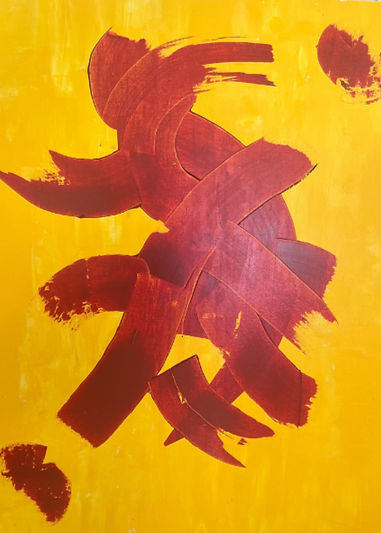Between Motion and Stillness: The Abstractions of Harmeet Singh
Harmeet Singh’s recent paintings inhabit the fertile space between energy and contemplation. Rooted in the lineage of Post–Abstract Expressionism and Lyrical Abstraction, his works transform gesture into meditation and color into emotional resonance. Each brushstroke carries both urgency and restraint — a disciplined freedom that recalls the physical intensity of Franz Kline or Pierre Soulages, yet unfolds with the reflective quietude of Indian modern abstractionists like V. S. Gaitonde and S. H. Raza.
In these compositions, gesture becomes an inner language. The sweeping marks of black, red, or green emerge not as chaos but as choreography — movements of thought and feeling suspended within radiant fields of color. Singh’s palette—whether the ascetic greys of tension, the luminous ochres of release, or the vibrant greens of renewal—evokes a spiritual progression from struggle toward clarity.
While his works echo the legacy of Western gestural abstraction, their pulse is unmistakably Indian: rhythm, repetition, and the meditative equilibrium of silence and motion define his practice. These paintings are less about depicting reality and more about revealing presence — the meeting point of material and transcendental experience.
In fusing expressive energy with contemplative stillness, Harmeet Singh articulates a distinctly contemporary abstraction — one that bridges continents, histories, and inner worlds.



